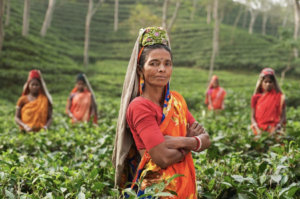Microcredit: One of The Best Ways of Empowering Women

Globally, 55% of women live in poverty and 42% do not have access to financial institutions. The majority are subject to subordination by patriarchal societies and reliant on their male counterparts because they do not have access to financial independence. This prevents women from better providing for themselves and their families. However, with the arrival of microcredit and microfinance institutions (MFI) in the last couple of decades, millions of women around the world are uplifting generations out of poverty.
What is Microcredit?
Microcredit is a path toward financial inclusion through the lending of small loans, without collateral, to the poor. Microcredit is part of the broader spectrum of microfinance institutions (MFI) that provide additional financial services like micro-insurance and financial literacy. These services help those impoverished to start small businesses, break cycles of poverty and boost the economy of local communities.
Microcredit is largely made possible through peer support systems applied in many MFIs. Because they mostly reach rural villages, many borrowers know each other and know that their failure to pay back loans will hurt their community.
Primary investors are interested in social returns to reduce poverty and boost the economy. They are not philanthropists but are committed to social businesses set with proper risk assessment, transparent monitoring and educational programs to protect investors and borrowers. Eleven MFIs are perceived as competitive for investors due to their growing success, including global income on investment to be high at 19%, only 6% at risk and strong 11.5% return on equity which all show great development in the industry.
Why Focus on Women?
Aside from the fact that women have been predominantly denied crucial financial services, of the 139 million MFI borrowers worldwide 80% are women. Before, many would assume women and those impoverished would be risky borrowers. Now, studies confirm that female borrowers of regulated MFIs have lower write-offs, portfolio risk and fewer provisions than men, making them ideal clients.
Additionally, women spend 90% of their income on family needs compared to only 35% of men. This also means educational attainment for their children increases, which can double or triple a young girl’s future income. Research also shows that when women control family money, their children are more likely to survive by 20%. Microcredit allows for the kinds of investments and benefits for gender equality to occur through avenues of financial independence. Such investment in long-term gender equality means 150 million more people have access to food worldwide and boost the economy by doubling global GDP to about $160 trillion.
A recent International Monetary Fund (IMF) study reported that gender equality consistently has proven to boost the economy. Countries with higher rates of gender equality, 70% or above, directly correlate with up to 13% growth in their GDP per capita compared to countries declining as much as 15% with lower rates.
These results come from smaller wage gaps which are derived from more equal access to opportunities.
Overall, women provide diversification and economic resilience to the global market and efforts to multiply gender equality, like microfinance services, will only further boost the economy.
Global Success of Microcredit
Today, there are some 916 MFIs serving about 140 million people globally. Of those, 65% live in rural areas where financial services are needed the most.
Many remain skeptical after corrupt and exploitative practices from lenders in the 2000s. Money was seen to be used for non-entrepreneurial endeavors like home loans and trying to make loans profitable. For-profit banks and techniques like lender intimidation and excessively high-interest rates had greatly diverged from the mission to help the world’s poor.
However, these three organizations are just examples of how beneficial and empowering the diverse practices of microfinance are at its core and after reform and innovation.
- Grameen Bank: Muhammad Yunus is the catalyst of this industry in the 1970s with his establishment of Grameen Bank in Bangladesh. By using group-based lending to offset collateral, the Bank is able to securely provide loans to the poorest and foster a collaborative setting. Through this, its 9.6 million borrowers, 97% women, can meet weekly, pay off loans, uphold the 97% repayment rate and share ideas. Proven results include a 50% increase in average household income compared to the original target groups of Grameen Bank and only 20% are below the poverty line compared to 56% of non-members.
- Opportunity International: This organization serves 17 million clients in 27 countries, and also has an impressive 97% repayment rate. They provide additional services like saving accounts and trust groups and have been able to develop and sustain 20 million jobs. Opportunity International maximizes its efforts by prioritizing four “Key Focus Areas.” This has resulted in $49 million towards agriculture, 263 million children experiencing education, expanding technology like mobile banking and empowering women, who are 95% of their clients.
- Kiva: This unique non-profit connects borrowers and lenders through crowdfunding resources which help minimize risk to its 1.9 million lenders and help its 3.6 million borrowers, 81% of whom are women, in 77 countries. Unlike other institutions, lenders have more power in deciding who they want to lend to, with regulated and monitored interest rates. This enables more women to go to college and others to build their own bakeries, but still managing risk by only distributing a second loan after the first has been fully paid back.
These three organizations collectively benefit 30.2 million people around the world. They only shed light on a fraction of the total positive impacts of microfinance which boosts the economy locally and globally. While microcredit for women and the poor is not a silver bullet for poverty alleviation, it is a vital avenue for financial inclusion and should only be further pursued.
– Mizla Shrestha
Photo: PX Here
